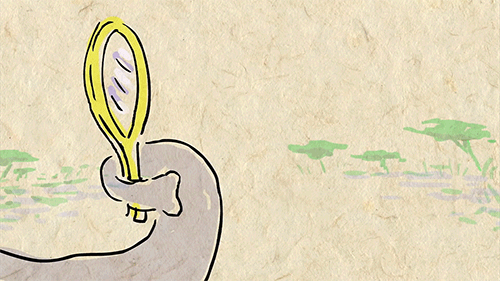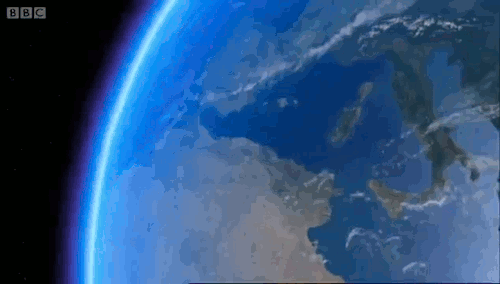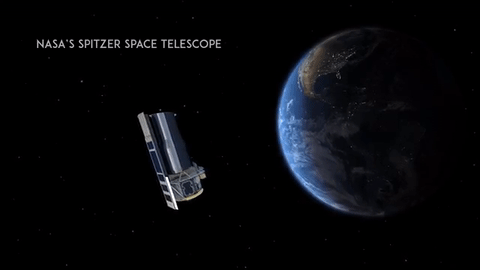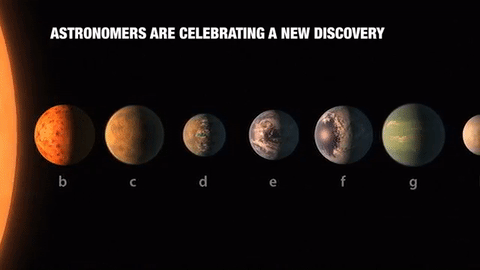He Really Put Himself Into The Character.

He really put himself into the character.
More Posts from Philosophical-amoeba and Others

Look! A scientist who says more scrutiny is needed! Yea!
AND - “Don’t try this at home!”
Cadaver study casts doubts on how zapping brain may boost mood, relieve pain
Earlier this month, György Buzsáki of New York University (NYU) in New York City showed a slide that sent a murmur through an audience in the Grand Ballroom of New York’s Midtown Hilton during the annual meeting of the Cognitive Neuroscience Society. It wasn’t just the grisly image of a human cadaver with more than 200 electrodes inserted into its brain that set people whispering; it was what those electrodes detected—or rather, what they failed to detect.
When Buzsáki and his colleague, Antal Berényi, of the University of Szeged in Hungary, mimicked an increasingly popular form of brain stimulation by applying alternating electrical current to the outside of the cadaver’s skull, the electrodes inside registered little. Hardly any current entered the brain. On closer study, the pair discovered that up to 90% of the current had been redirected by the skin covering the skull, which acted as a “shunt,” Buzsáki said.
The new, unpublished cadaver data make dramatic effects on neurons unlikely, Buzsáki says. Most tDCS and tACS devices deliver about 1 to 2 milliamps of current. Yet based on measurements from electrodes inside multiple cadavers, Buzsaki calculated that at least 4 milliamps—roughly equivalent to the discharge of a stun gun—would be necessary to stimulate the firing of living neurons inside the skull. Buzsáki notes he got dizzy when he tried 5 milliamps on his own scalp. “It was alarming,” he says, warning people not to try such intense stimulation at home.
Buzsáki expects a living person’s skin would shunt even more current away from the brain because it is better hydrated than a cadaver’s scalp. He agrees, however, that low levels of stimulation may have subtle effects on the brain that fall short of triggering neurons to fire. Electrical stimulation might also affect glia, brain cells that provide neurons with nutrients, oxygen, and protection from pathogens, and also can influence the brain’s electrical activity. “Further questions should be asked” about whether 1- to 2-milliamp currents affect those cells, he says.
Buzsáki, who still hopes to use such techniques to enhance memory, is more restrained than some critics. The tDCS field is “a sea of bullshit and bad science—and I say that as someone who has contributed some of the papers that have put gas in the tDCS tank,” says neuroscientist Vincent Walsh of University College London. “It really needs to be put under scrutiny like this.”










My boyfriend, @inlove-with-a-spine, is very uninformed about Southeast Asian fruits (he only knows durian) which inspired me to find these online.
I’m pretty sure the names are different in other Southeast Asian countries, though.
From left to right (in Indonesian):
Duku
Jambu monyet
Jeruk
Lengkeng
Kedondong
Manggis
Rambutan
Nangka
Salak
Sawo
12 Amazing Facts About Elephants
In honor of World Elephant Day, we present you with 12 little known facts about one of our favorite creatures…in GIFs, of course.

1. Elephants know every member of their herd and are able to recognize up to 30 companions by sight or smell.

2. They can remember and distinguish particular cues that signal danger and can recall locations long after their last visit.

3. An elephant’s memory is not limited to its herd, nor is it limited to its species. In one instance, two circus elephants that performed together rejoiced when crossing paths 23 years later. Elephants have also recognized humans that they once bonded with after decades apart. 4.

4. The elephant boasts the largest brain of any land mammal as well as an impressive encephalization quotient (the size of the animal’s brain relative to its body size). The elephant’s EQ is nearly as high as a chimpanzee’s.

5. The elephant brain is remarkably similar to the human brain, with as many neurons and synapses, as well as a highly developed hippocampus and cerebral cortex.

6. Elephants are one of the few non-human animals to suffer from post-traumatic stress disorder.

7. Elephants are creative problem solvers.

8. Don’t try to outsmart an elephant! They have an understanding of basic arithmetic and can even keep track of relative quantities.

9. Elephants communicate using everything from body signals to infrared rumbles that can be heard from kilometers away. Their understanding of syntax suggests that they have their own language and grammar.

10. Elephants can recognize 12 distinct tones of music and recreate melodies.

11. Elephants are the only non-human animals to mourn their dead, performing burial rituals and returning to visit graves.

12. Elephants are one of the few species who can recognize themselves in the mirror.
Given what we now know about elephants, and what they continue to teach us about animal intelligence, it is more important than ever to make sure that these magnificent creatures do not vanish.
Check out some more fun elephant facts here and be sure to watch the TED-Ed Lesson Why elephants never forget - Alex Gendler
Animation by the ever-talented Avi Ofer

Around 6 million years ago, the African and Eurasian plates moved together, cutting the Mediterranean Sea off from the Atlantic. Without an influx of water from the Atlantic, evaporation began removing more water from the Mediterranean than rivers could replace. The sea dried out almost completely over the course of a couple thousand years.
About 5.3 million years ago, the Straits of Gibraltar reopened, creating a massive flood into the Mediterranean known as the Zanclean Flood. Water rushed down the straits and into the Mediterranean at speeds as high as 40 m/s (90 mph). At its peak, the Zanclean Flood is estimated to have reached rates 1000 times greater than the volumetric flow rate of the Amazon River.
A similar breach flood occurred in the Black Sea within the past 10,000 years when the Bosporus became unblocked. That flood likely had a devastating impact on Neolithic societies in the area and may be the inspiration for the floods described in the Epic of Gilgamesh and the Bible. (Image credit: BBC, source)
Largest Batch of Earth-size, Habitable Zone Planets
Our Spitzer Space Telescope has revealed the first known system of seven Earth-size planets around a single star. Three of these planets are firmly located in an area called the habitable zone, where liquid water is most likely to exist on a rocky planet.

This exoplanet system is called TRAPPIST-1, named for The Transiting Planets and Planetesimals Small Telescope (TRAPPIST) in Chile. In May 2016, researchers using TRAPPIST announced they had discovered three planets in the system.

Assisted by several ground-based telescopes, Spitzer confirmed the existence of two of these planets and discovered five additional ones, increasing the number of known planets in the system to seven.

This is the FIRST time three terrestrial planets have been found in the habitable zone of a star, and this is the FIRST time we have been able to measure both the masses and the radius for habitable zone Earth-sized planets.
All of these seven planets could have liquid water, key to life as we know it, under the right atmospheric conditions, but the chances are highest with the three in the habitable zone.

At about 40 light-years (235 trillion miles) from Earth, the system of planets is relatively close to us, in the constellation Aquarius. Because they are located outside of our solar system, these planets are scientifically known as exoplanets. To clarify, exoplanets are planets outside our solar system that orbit a sun-like star.

In this animation, you can see the planets orbiting the star, with the green area representing the famous habitable zone, defined as the range of distance to the star for which an Earth-like planet is the most likely to harbor abundant liquid water on its surface. Planets e, f and g fall in the habitable zone of the star.
Using Spitzer data, the team precisely measured the sizes of the seven planets and developed first estimates of the masses of six of them. The mass of the seventh and farthest exoplanet has not yet been estimated.

For comparison…if our sun was the size of a basketball, the TRAPPIST-1 star would be the size of a golf ball.
Based on their densities, all of the TRAPPIST-1 planets are likely to be rocky. Further observations will not only help determine whether they are rich in water, but also possibly reveal whether any could have liquid water on their surfaces.
The sun at the center of this system is classified as an ultra-cool dwarf and is so cool that liquid water could survive on planets orbiting very close to it, closer than is possible on planets in our solar system. All seven of the TRAPPIST-1 planetary orbits are closer to their host star than Mercury is to our sun.

The planets also are very close to each other. How close? Well, if a person was standing on one of the planet’s surface, they could gaze up and potentially see geological features or clouds of neighboring worlds, which would sometimes appear larger than the moon in Earth’s sky.

The planets may also be tidally-locked to their star, which means the same side of the planet is always facing the star, therefore each side is either perpetual day or night. This could mean they have weather patterns totally unlike those on Earth, such as strong wind blowing from the day side to the night side, and extreme temperature changes.

Because most TRAPPIST-1 planets are likely to be rocky, and they are very close to one another, scientists view the Galilean moons of Jupiter – lo, Europa, Callisto, Ganymede – as good comparisons in our solar system. All of these moons are also tidally locked to Jupiter. The TRAPPIST-1 star is only slightly wider than Jupiter, yet much warmer.
How Did the Spitzer Space Telescope Detect this System?
Spitzer, an infrared telescope that trails Earth as it orbits the sun, was well-suited for studying TRAPPIST-1 because the star glows brightest in infrared light, whose wavelengths are longer than the eye can see. Spitzer is uniquely positioned in its orbit to observe enough crossing (aka transits) of the planets in front of the host star to reveal the complex architecture of the system.

Every time a planet passes by, or transits, a star, it blocks out some light. Spitzer measured the dips in light and based on how big the dip, you can determine the size of the planet. The timing of the transits tells you how long it takes for the planet to orbit the star.

The TRAPPIST-1 system provides one of the best opportunities in the next decade to study the atmospheres around Earth-size planets. Spitzer, Hubble and Kepler will help astronomers plan for follow-up studies using our upcoming James Webb Space Telescope, launching in 2018. With much greater sensitivity, Webb will be able to detect the chemical fingerprints of water, methane, oxygen, ozone and other components of a planet’s atmosphere.
At 40 light-years away, humans won’t be visiting this system in person anytime soon…that said…this poster can help us imagine what it would be like:

Make sure to follow us on Tumblr for your regular dose of space: http://nasa.tumblr.com
The Cuban Missile Crisis
At this time in 1962, the U.S. was in the thick of the Cuban Missile Crisis. Here’s a brief recap of what exactly happened during those thirteen days.

It’s not hard to imagine a world where at any given moment, you and everyone you know could be wiped out without warning at the push of a button. This was the reality for millions of people during the 45-year period after World War II, now known as the Cold War. As the United States and Soviet Union faced off across the globe, each knew that the other had nuclear weapons capable of destroying it. And destruction never loomed closer than during the 13 days of the Cuban Missile Crisis.

In 1961, the U.S. unsuccessfully tried to overthrow Cuba’s new communist government. That failed attempt was known as the Bay of Pigs, and it convinced Cuba to seek help from the U.S.S.R. Soviet premier Nikita Khrushchev was happy to comply by secretly deploying nuclear missiles to Cuba, not only to protect the island, but to counteract the threat from U.S. missiles in Italy and Turkey. By the time U.S. intelligence discovered the plan, the materials to create the missiles were already in place.

At an emergency meeting on October 16, 1962, military advisors urged an airstrike on missile sites and invasion of the island. But President John F. Kennedy chose a more careful approach. On October 22, he announced that the the U.S. Navy would intercept all shipments to Cuba, but a naval blockade was considered an act of war. Although the President called it a quarantine that did not block basic necessities, the Soviets didn’t appreciate the distinction.

Thus ensued the most intense six days of the Cold War. As the weapons continued to be armed, the U.S. prepared for a possible invasion. For the first time in history, the U.S. Military set itself to DEFCON 2, the defense readiness one step away from nuclear war. With hundreds of nuclear missiles ready to launch, the metaphorical Doomsday Clock stood at one minute to midnight.
But diplomacy carried on. In Washington, D.C., Attorney General Robert Kennedy secretly met with Soviet Ambassador Anatoly Dobrynin. After intense negotiation, they reached the following proposal. The U.S. would remove their missiles from Turkey and Italy and promise to never invade Cuba in exchange for the Soviet withdrawal from Cuba under U.N. inspection. The crisis was now over.

While criticized at the time by their respective governments for bargaining with the enemy, contemporary historical analysis shows great admiration for Kennedy’s and Khrushchev’s ability to diplomatically solve the crisis. Overall, the Cuban Missile Crisis revealed just how fragile human politics are compared to the terrifying power they can unleash.
For a deeper dive into the circumstances of the Cuban Missile Crisis, be sure to watch The history of the Cuban Missile Crisis - Matthew A. Jordan
Animation by Patrick Smith

Which Shakespeare Play Should I See?
This coming Saturday is the 400th anniversary of Shakespeare’s death! Not sure what Shakespeare play you should see or read to commemorate the occasion? No worries! I’ve put together a little flowchart to help you make up your mind.
HAPPY SHAKESPEARE-ING, EVERYONE!
-
 pajaritocantando liked this · 4 years ago
pajaritocantando liked this · 4 years ago -
 starxo31 liked this · 4 years ago
starxo31 liked this · 4 years ago -
 alpha-prime-1028 liked this · 6 years ago
alpha-prime-1028 liked this · 6 years ago -
 zaruba-needslove reblogged this · 6 years ago
zaruba-needslove reblogged this · 6 years ago -
 lunalovegood2 liked this · 7 years ago
lunalovegood2 liked this · 7 years ago -
 snowyowlee reblogged this · 8 years ago
snowyowlee reblogged this · 8 years ago -
 ronniejayy-blog1 liked this · 8 years ago
ronniejayy-blog1 liked this · 8 years ago -
 likeabossjackreacharound liked this · 8 years ago
likeabossjackreacharound liked this · 8 years ago -
 baekmecookiespls liked this · 8 years ago
baekmecookiespls liked this · 8 years ago -
 jedinate1999 liked this · 8 years ago
jedinate1999 liked this · 8 years ago -
 koalastick reblogged this · 8 years ago
koalastick reblogged this · 8 years ago -
 plunetzero liked this · 8 years ago
plunetzero liked this · 8 years ago -
 soft-heartedhana reblogged this · 8 years ago
soft-heartedhana reblogged this · 8 years ago -
 rickfuckingdalton reblogged this · 8 years ago
rickfuckingdalton reblogged this · 8 years ago -
 rickfuckingdalton liked this · 8 years ago
rickfuckingdalton liked this · 8 years ago -
 starlitvalkyrie liked this · 8 years ago
starlitvalkyrie liked this · 8 years ago -
 pagesoverwages liked this · 8 years ago
pagesoverwages liked this · 8 years ago -
 psycho-nemesis reblogged this · 8 years ago
psycho-nemesis reblogged this · 8 years ago -
 thenightronin liked this · 8 years ago
thenightronin liked this · 8 years ago -
 sihayanami liked this · 8 years ago
sihayanami liked this · 8 years ago -
 drake-ensiferum liked this · 8 years ago
drake-ensiferum liked this · 8 years ago -
 batpdgp liked this · 8 years ago
batpdgp liked this · 8 years ago -
 mandalore-chan-blog liked this · 8 years ago
mandalore-chan-blog liked this · 8 years ago -
 bobfishsquaresponge liked this · 8 years ago
bobfishsquaresponge liked this · 8 years ago -
 waxscoralpants reblogged this · 8 years ago
waxscoralpants reblogged this · 8 years ago -
 emereldseptember liked this · 8 years ago
emereldseptember liked this · 8 years ago -
 scimmymunkeh liked this · 8 years ago
scimmymunkeh liked this · 8 years ago -
 paleyparksoul reblogged this · 8 years ago
paleyparksoul reblogged this · 8 years ago -
 capturedbychance liked this · 8 years ago
capturedbychance liked this · 8 years ago -
 putatardisonit reblogged this · 8 years ago
putatardisonit reblogged this · 8 years ago -
 dapperman liked this · 8 years ago
dapperman liked this · 8 years ago -
 patitavalenzuela-blog liked this · 8 years ago
patitavalenzuela-blog liked this · 8 years ago -
 dutchfruitjar liked this · 8 years ago
dutchfruitjar liked this · 8 years ago -
 lena-skywalker-solo-blog liked this · 8 years ago
lena-skywalker-solo-blog liked this · 8 years ago -
 abail77-blog liked this · 8 years ago
abail77-blog liked this · 8 years ago
A reblog of nerdy and quirky stuff that pique my interest.
291 posts

